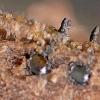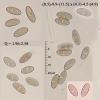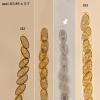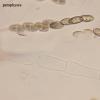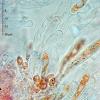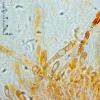
17-01-2026 19:35
Arnold BüschlenHallo, ich suche zu Cosmospora aurantiicola Lite

15-01-2026 15:55
 Lothar Krieglsteiner
Lothar Krieglsteiner
this one is especially interesting for me because

16-01-2026 00:45
Ethan CrensonHi all, On decorticated hardwood from a New York

18-01-2026 12:24
Hello.An anamorph located on the surface of a thin

08-12-2025 17:37
 Lothar Krieglsteiner
Lothar Krieglsteiner
20.6.25, on branch of Abies infected and thickened

10-01-2026 20:00
Tom SchrierHi all,We found picnidia on Protoparmeliopsis mur

13-01-2026 07:28
 Danny Newman
Danny Newman
Chlorociboria glauca on indet. decorticate logThe
I'd like to know your opinion about this 'ceratostomelloid' fungus growing on rotten wood of Fagus sylvatica. The beaked, scattered, glabrous, inmersed perithecia are up to 1 mm high with only the long necks erumpent across the surface.
The asci are cylindrical, shortly stipitate, 63-85 x 6-7 microns, with an conspicuous apical apparatus IKI negative and 8 ascospores obliquely uniseriate. Paraphyses septate tapering at the end. Ascospores 8.5-11.5 x 4.3-4.9; Q = 1.96-2.58, allways 2-guttulate, smooth, maybe porate (?).
I think this fungus agrees better with Xylomelasma than Ceratostomella. What do you think?
Thanks again

Xylomelasma sordida seems to be a good match. Did you observe the peculiar ascogenous cells at the base of the asci, as described by Réblova? You have to make a very thin slide to see them, hard job!
Saludos,
Jacques


